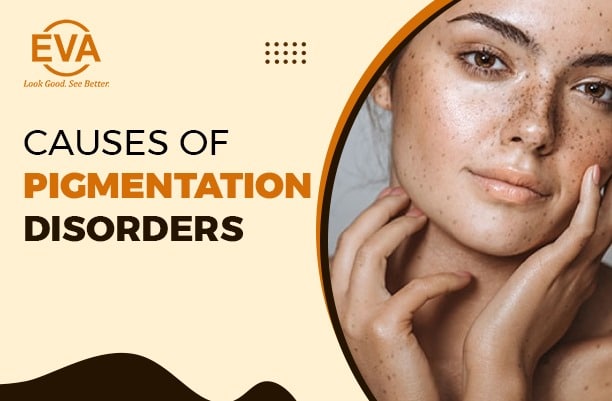Skin colour is impacted by disorders called pigmentation disorders, or dyschromia. Hyperpigmentation (darkening) or hypopigmentation (lightening) of the skin are two possible symptoms of these disorders. Even though these conditions are frequently benign, they can occasionally be visually upsetting and suggest underlying health problems. We will go into great detail about the numerous causes of pigmentation disorders in this blog post.
- Genetic Factors: Genetics is a major contributing factor to pigmentation disorders. The pigment known as melanin, which determines skin tone, can be produced and distributed differently depending on inherited genes. Genetic pigmentation disorders include conditions like albinism, which is characterized by a lack of melanin, and vitiligo, which is characterized by the destruction of melanocytes, or cells that produce melanin.
- UV Radiation: One major factor contributing to pigmentation disorders is prolonged exposure to ultraviolet (UV) radiation from the sun. Sunlight can cause the overproduction of melanin, which can result in sunspots and melasma. Furthermore, excessive sunlight can harm skin cells’ DNA, which may result in abnormal pigmentation.
- Hormonal Changes: Hormonal changes can affect pigmentation, especially those associated with pregnancy. Often called the “mask of pregnancy,” melasma is a common pigmentation disorder associated with hormonal fluctuations. Skin pigmentation changes can also result from hormone replacement therapy and birth control pills.
- Inflammation and Skin Trauma: Trauma and inflammatory skin diseases can interfere with melanocytes’ ability to function normally. The condition known as eczema, and acne can all cause post-inflammatory hyperpigmentation, a condition in which dark spots remain on the skin long after the original skin condition has healed. As the skin heals, wounds and surgeries can also result in irregular pigmentation.
- Chemical Exposure: Pigmentation disorders can result from exposure to certain chemicals, including those found in some skincare and cosmetics products. Some people may react negatively to ingredients like hydroquinone, which is frequently used in skin-lightening products, resulting in hypo- or hyperpigmentation.
- Medical Conditions: Pigmentation disorders may be linked to specific medical conditions. For instance, hyperpigmentation may result from Addison’s disease, an illness affecting the adrenal glands. A bronze or grayish skin tone may result from hemochromatosis, a condition in which the body absorbs excessive amounts of iron.
- Medications: Changes in pigmentation are a known side effect of certain medications. Antibiotics, antimalarial medications, and chemotherapy drugs are a few examples. People using these drugs should be mindful of any possible changes to their skin and should speak with their doctors if they have any concerns.
- Age-Related Changes: Disorders related to pigmentation can be worsened by aging. The natural decrease in melanin production that occurs with aging skin causes the skin to gradually lighten. In addition, age spots and uneven pigmentation can be caused by years of accumulative sun exposure.
Conclusion:
For effective management and prevention of pigmentation disorders, an understanding of their causes is essential. Although certain factors, like genetics, are unchangeable, people can take proactive measures to reduce the influence of other factors. Important tactics include wearing sunscreen, staying away from harsh chemicals, and treating hormone imbalances under a doctor’s supervision. It is advised to see a Female cosmetic Surgeon for Laser Pigmentation Removal in Delhi for the particular pigmentation condition. People can effectively address pigmentation concerns and maintain skin health by embracing a multifaceted strategy.
Also Read:- What Are The Effects Of Cosmetic Surgery On Our Life?



